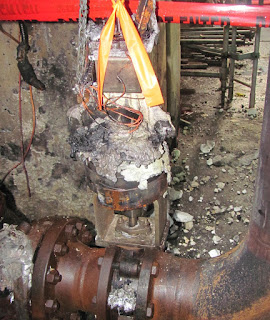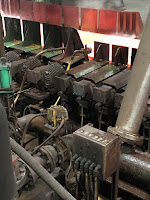https://kinetrolusa.com
972-447-9443
The Kinetrol rotary vane design is based upon a single moving part which eliminates additional parts required to convert linear motion to rotary motion. This simple and innovative design provides a highly accurate and extremely reliable actuator for operating valves, drives and dampers, and is perfectly suited for the most demanding process control applications. For more information visit www.kinetrolusa.com or call 972-447-9443.
Kinetrol's "Blueline" Series of pneumatic vane actuators for use in food and beverage production. Install Blueline Actuators in areas where harsh chemical wash-down is required. These are areas that are very tough on most pneumatic actuators because of the caustic or acidic chemicals used in the cleaning process damage the actuator.
Kinetrol's Blueline Series provides a very economical option for use with caustic and acidic wash-down procedures. The actuators have non-stick properties, resistance to salt-laden environments, and exceptional resistance to chipping and flaking. Additionally, if the coating does become dislodged, it is visible to the human eye or the photo optic detectors used in quality controls systems.
For more information, contact:
Kinetrol USA
https://kinetrolusa.com
972-447-9443
Kinetrol rotary vane actuators have a well earned, and long established, reputation for performing where other pneumatic actuators fail. With outstanding cycle life, smooth and precise operation, and an environmentally rugged design, Kinetrol actuators are "simply the best" quarter-turn valve and damper actuator on the market today. Period.
For more information, contact Kinetrol USA. Call them at 972-447-9443 or visit their website at https://kinetrolusa.com.
 |
| This picture is of what used to be a Kinetrol 097-120 and the valve it secured. |
 |
| Close-up view of the Kinetrol Actuator. A melted ball of metal. |
 |
| Location of the actuator and valve at bottom of hopper. |
 |
| Kinetrol actuators and positioners perform in dirt and dust. |
 |
| Bearing Cooling Water Temperature Control Valve |
 |
| Kinetrol actuator on descale water system. |
 |
| Wider view. |
 Industrial valves, dampers and louvers are operated either electrically or pneumatically. This post compares the three major categories of pneumatic valve actuators, namely:
Industrial valves, dampers and louvers are operated either electrically or pneumatically. This post compares the three major categories of pneumatic valve actuators, namely: |
| Rotary Vane Actuator |
 Scotch Yoke
Scotch Yoke A rack & pinion pneumatic actuator uses opposing pistons with integral gears to engage a pinion gear shaft to produce rotation. Rack & pinion actuators (sometimes referred to as a lunch box because of their shape) tend to be more compact than scotch yoke, have standardized mounting patterns, and produce output torques suitable for small to medium sized valves. They almost always include standard bolting and coupling patterns to directly attach a valve, solenoid, limit switch or positioner. Rack and pinion actuators use several smaller coil springs mounted internally and provide the torque to return the valve to its starting position.
A rack & pinion pneumatic actuator uses opposing pistons with integral gears to engage a pinion gear shaft to produce rotation. Rack & pinion actuators (sometimes referred to as a lunch box because of their shape) tend to be more compact than scotch yoke, have standardized mounting patterns, and produce output torques suitable for small to medium sized valves. They almost always include standard bolting and coupling patterns to directly attach a valve, solenoid, limit switch or positioner. Rack and pinion actuators use several smaller coil springs mounted internally and provide the torque to return the valve to its starting position. A very large mozzarella cheese producer in the USA had an actuator problem with their EFV’s (Enclosed Finishing Vats). The flow of the curds being blown into the EFV’s is controlled by star valves and pneumatic actuators. The actuators and valves serve (2) critical purposes: 1) The shut off of the star valve; and 2) controlling the air flow of the blower.
A very large mozzarella cheese producer in the USA had an actuator problem with their EFV’s (Enclosed Finishing Vats). The flow of the curds being blown into the EFV’s is controlled by star valves and pneumatic actuators. The actuators and valves serve (2) critical purposes: 1) The shut off of the star valve; and 2) controlling the air flow of the blower.